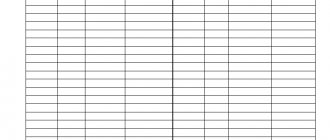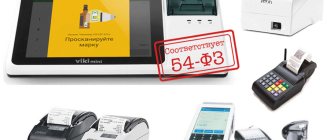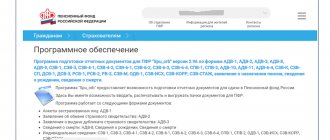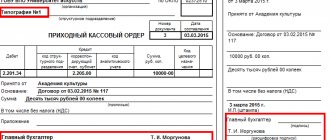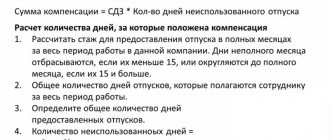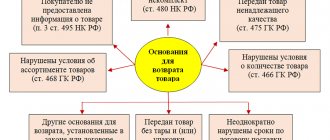Firstly, why do we need an order warehouse ? In large companies, the operations of preparing financial documents, such as an invoice, a receipt invoice, and the actual operation of shipping or receiving inventory in a warehouse can be separated. For example, financial documents related to receipts, such as an invoice, can be prepared by a purchasing manager. Invoices can be prepared by the sales manager. And directly at the warehouse, the materially responsible person - the storekeeper, when accepting or releasing goods, draws up receipt and expenditure orders for such warehouse operations.
The ability to use warehouse order warehouses in the 1C Trade Management program (UT 11) 11.2 is enabled in the section “Regulatory and reference information and administration” . “Warehouse and delivery” section settings, “use order warehouses” flag . After this, directly in each of our warehouses, on the “order scheme and structure” , you can set flags regarding which operations of receipt, shipment, internal goods circulation and from what date the order accounting scheme will be applied.
Now let’s look directly at the document flow of receipt of goods at the order warehouse.
Creating an agreement with a supplier in the 1C Trade Management program (UT 11) 11.2
And we will begin our document flow with the “Agreement with the supplier” . To do this, let's go to the section "Purchases" , "Agreements with suppliers" , and create another agreement. Let's call it “Buying Furniture”. Our supplier will be the Furniture Factory, the counterparty will be “Sketch”. The number can be specified arbitrarily. The date is today's. Status of this agreement Valid; You can also indicate that from today and indefinitely. Operation – “purchase from supplier” . The organization on our part will be TD Optovichok, the responsible manager is the administrator.
You can go to the “Purchase Conditions” and provide the relevant information. Our payment terms will be “by order”. No contract required. The payment procedure is “settlements in rubles – payment in rubles” . The currency is “rubles”, the price includes VAT. It will be necessary to create a price for our supplier - let's call it “wholesale”. We will also have it in rubles and include VAT; the price is available for purchase.
Next, set the flag “Register supplier prices automatically” . The taxation of this purchase is “subject to VAT” . Reception of goods is divided by orders and invoices; we will select an order .
On the “Other conditions” , you can specify that the cash flow item will be “payment to supplier”. Let's write down such an agreement.
Opened form:
A cash receipt order is a document of primary accounting documentation of cash transactions, according to which funds are received at the organization's cash desk. The cash receipt order form is located in the album of unified forms for recording cash transactions and inventory results called form KO-1 .
Acceptance of cash by cash registers of organizations, filling out the PKO form and receipts for it are regulated by Art. 13, art. 19-21 “Procedure for conducting cash transactions in the Russian Federation”, approved by the Decision of the Board of Directors of the Central Bank of Russia on September 22, 1993 N 40. According to Art. 13 cash registers of enterprises can accept cash only on receipt cash orders of form KO-1, which must be signed by the chief accountant or another person authorized by written order of the director. A receipt for the PKO is issued to the person who deposits money into the organization’s cash desk. It must be certified by the seal of the organization, signed in the same way as the parishioner himself, and in addition by the cashier who receives the money.
The cash receipt form is issued by an accounting employee in one copy. The line “Organization” indicates the full name of the organization and its OKPO code assigned by the statistics department. The next line is filled in only if the funds come from a structural unit of this organization (for example, revenue from a retail outlet), otherwise a dash is placed there. PKOs are numbered, as a rule, starting from January 1 of the current year - the serial number is placed in the “Document number” column. Due to the fact that primary documents must be completed on the day of the operation, the current date is indicated in the “Date of Compilation” column. In the columns “Debit” and “Credit” the numbers of the corresponding accounts and codes are entered if the organization uses coding. In the “Amount” column the amount of funds received at the cash desk is entered in numbers. A dash is placed in the “Purpose Code” column if the organization has not adopted a coding system. In the “Accepted from” line, write the full name of the organization’s employee, or when making payments between organizations, write the name of the organization and the full name of the employee through whom the funds were transferred. In this case, the word “through” is entered, for example “Accepted from Milan CJSC through Nikolai Ivanovich Ivanov.” In the “Base” field, you must enter the content of the transaction, for example, “retail revenue” or “payment under the agreement.”
In the “Amount” line, the rules require you to indicate the entire amount of incoming funds in words from the beginning of the line with a capital letter (kopecks are indicated in numbers). In the Formz.ru cash receipt form this is done automatically.
The VAT amount, if necessary, should be located in the “Including” line. The attached documents, indicating their numbers and dates of completion, are located in the “Attachment” field. These documents themselves, immediately after receiving the money, are canceled with the “Received” stamp indicating the current date.
The receipt for the cash receipt order must contain all the same information as the order itself.
In accordance with Russian legislation, payments between organizations and enterprises are carried out, as a rule, by bank transfer. According to Directive No. 1843-U dated June 20, 2007, the maximum amount of settlements between legal entities or individual entrepreneurs in cash under one agreement is set at 100 thousand rubles. Cash payments to the population must be made with the mandatory use of cash registers. Each enterprise must have a cash register and maintain a cash book in the prescribed form.
See also:
Issue a cash receipt order Sample of a cash receipt order - pdf Sample of a cash receipt order - gif
Questions and answers on the form
Registration of supplier prices in the 1C Trade Management program (UT 11) 11.2
Now we need to register our supplier's prices.
Being in the “Agreement” itself, using the “Create based on” , select – “registration of supplier prices” .
A window automatically opens where we indicate the type of prices we want to register and proceed to setting prices.
We will need to add “Nomenclature”. Let's try to pick it up. In this case, we will be interested in “Furniture”. We will select a kitchen table in the color “mahogany”, also “light wood”, “dark wood”. While in the window for selecting the characteristics of our keyboard, using the Back space , you can return to the list of the nomenclature itself. Let's indicate a chair here, and also select three colors for it. Let's transfer this nomenclature into the document.
Now for each of these positions it will be necessary to register and set wholesale prices. Let's install them. I will have tables: 5500, 6000, 6500 rubles. Chairs will be 1000, 1500 and 2000 rubles. Such a document can be carried out.
Creating an order for a supplier in the 1C Trade Management program (UT 11) 11.2
Next, we will create an “Order to the supplier” . To do this, you can go to the section “Purchases” - “Orders to suppliers” , and create a new order.
We indicate our supplier here. The counterparty and the agreement with it are filled in automatically.
Let's go to the "Products" and try to select our product range. We also indicate that we will purchase tables in 3 colors and chairs in 3 colors. Let's transfer this information to the document and set the quantity. We will purchase tables in 3 pcs., chairs in 6 pcs. respectively. Our supplier prices are filled in based on registered prices.
On the “Advanced” , check that we have indicated the manager, division, delivery address, and the approval date can be set to today. The currency is indicated, the flag is - the price includes VAT, the purchase is subject to VAT. And the “Register supplier prices automatically” flag is set.
On the “Basic” , we can set “payment options” - let us have a 100% prepayment, transfer it to the document, set the date for tomorrow. Let’s change the status of the document to “approved” and post the document.
Filling out an application for spending funds in the 1C Trade Management program (UT 11) 11.2
Next, based on the completed order to the supplier, you need to create an “Application for spending funds” .
We create it by entering on the basis. We check that the amount of the application matches the amount of the document. We make sure that our order is indicated “Decryption” On the “Distribution by Accounts” , we will add that this is a non-cash payment, it will be made from our current account, and we will set the payment date to today.
We will transfer such an application to the “Payment” , process it and close it.
System 1C Trade Management (UT 11) 11.2 says that we do not have the recipient's account specified. It needs to be created.
We will indicate the account number of our recipient; BIC of the bank in which he has an account; Let's select the name of the current account so that it appears in the selection card. Will record this information. Let's try to process our application again - configuration 1C Trade Management (UT 11) 11.2 allowed us to process it.
Instructions
The title of the receipt indicates the names of the organization and structural unit (if any). If there is no structural unit, a dash is added.
“Codes” are selected from the State Statistics Committee certificate.
“Document number” is indicated in accordance with the journal of registration of incoming and outgoing cash documents
Cash documents are numbered in order from the beginning of the calendar year.
The “date of compilation” is written in Arabic numerals in the following sequence: day of the month, month, year. The day of the month and month are represented by two pairs of Arabic numerals separated by a dot; year - in four Arabic numerals: dd.MM.YYYY.
If the serial number of the day of the month and (or) the month is less than ten, then 0 is placed in front. For example, the date January 1, 2010 should be written like this: 01/01/2010.
The receipt order is drawn up on the day the money is received at the cash desk, therefore, the date indicated in it is the date of receipt of the money.
Entries in the “Debit” and “Credit” columns are made by the accountant who will process the primary document.
In the “Debit” column, enter the account number on the debit of which funds are received. The subaccount number can also be indicated here in accordance with the organization’s working chart of accounts.
In the column “Credit, code of structural unit” the code of the structural unit to which the funds are allocated (if any) is indicated, for example, a department of a store, a specific outlet.
In the column “Credit, corresponding account, subaccount” the number of the account and, if necessary, the subaccount, the credit of which reflects the receipt of funds at the organization’s cash desk, is indicated.
In the column “Credit, analytical accounting code” the analytical accounting code for the account specified in the previous column is entered, if the use of such codes is provided for in the organization.
Debit and credit are filled out by organizations in accordance with the chart of accounts used. Individual entrepreneurs may not fill out these fields, because they do not keep accounting records.
In the column “Amount, rub. cop." the employee filling out the document indicates the amount of money (in numbers) received at the organization's cash desk.
In the column “Purpose Code” the code for the purpose of using the received funds is written down. This column is used if the organization uses the appropriate coding system.
Filling out the lines of a cash receipt order is carried out as follows. "Taken from ________":
- if money is accepted from an employee of the organization (in which the cash receipt order is drawn up), then this line indicates the last name, first name and patronymic of this employee in the genitive case;
- if money is accepted from an employee of a third-party organization, then in this line we write “Accepted from the “name of the organization” through “Last name, first name, patronymic.”
The “Base” line indicates the source of cash receipts, i.e.
the content of the financial transaction is reflected. In the “Amount” line, write down the amount of money that goes to the cash register. In this case, rubles are indicated in words with a capital letter and from the beginning of the line, and kopecks are indicated in numbers. If after writing the amount in rubles there is still free space on the line, then it is crossed out.
Here you should pay attention to this feature. If in the “Amount” column the amount received was indicated with kopecks, then in this line the amount is also indicated with kopecks. If the amount was indicated without kopecks, then the line about kopecks is not mentioned. For example, in the “Amount” column it is indicated: 870-00
. Therefore, in the “Amount” line it should be written: “Eight hundred seventy rubles 00 kopecks.”
If in the “Amount” column it is indicated: 450 =, then in the “Amount” line it should be written: “Four hundred and fifty rubles.”
In the line “Including” the amount of VAT is indicated, which is recorded in numbers, or the entry “excluding tax (VAT)” is made.
The “Appendix” line lists the attached primary and other documents.
The receipt for the cash receipt order is filled out in the same way as the order itself.
Before an incoming cash order reaches the cash desk, it must be registered in the register of incoming and outgoing cash documents (Form No. KO-3).
After completing and registering the PQS, but before receiving money for it, the PQS and the receipt are signed by the chief accountant or a person authorized to do so by written order of the manager.
The transcript of the signature is also indicated - last name and initials.
Upon receipt of the PKO, the cashier is obliged to check: a) the presence and authenticity of the chief accountant’s signature on the documents; b) the correctness of the documents; c) the presence of the applications listed in the documents.
If any of the above requirements are not met, the cashier must return the documents for revision and proper execution. Otherwise, the cashier accepts the money and, after receiving it, puts his signature, surname and initials on the receipt order and receipt.
From July 1, 2021, it is not necessary to take an application from an employee when issuing money.
On the receipt, the cashier also indicates the date the money was received and certifies his signature with a seal. The receipt is stamped so that the edge overlaps the receipt slip itself (see sample filling).
The documents attached to the PQS are canceled with a stamp or the inscription “Received” indicating the date (day, month, year).
After the money arrives at the cash register, the cashier tears off the receipt for the PKO along the cut line and hands it to the person who handed over the money, and leaves the cash order at the cash register.
Write-off of non-cash funds in the 1C Trade Management configuration (UT 11) 11.2
Now, based on the created application, in the “Payment” it is necessary to reflect the operation “Write-off of non-cash funds” .
Go to the "Treasury" . In “Requests for spending funds” and based on our created application, we create the document “Write-off of non-cash funds”.
Program 1C Trade Management (UT 11) 11.2 filled out all the basic details. All we have to do is enter the payment order number on the bank statement and be sure to check the “Passed by the bank” flag.
The payment decoding corresponds to the information about the application for the expenditure of funds and the object of settlement - an order to the supplier. Such a document can be posted and closed.
Now our “Order to the supplier” has already been paid. You can set its status to “for admission”. The 1C Trade Management system (UT 11) 11.2 provides information that we have not filled in the receipt date for this order. Let's go back to the document and set today's date. We will change the status to “For admission” and post such a document.
Receipt order for goods in the 1C Trade Management program (UT 11) 11.2
Now the order to the supplier has been fully paid for and is awaiting receipt.
Based on this document, you can carry out the warehouse accounting operation “receipt of goods”.
“Incoming and outgoing orders” itself is located in the “Warehouse and delivery” . In the “Order Warehouse” there are two access commands, respectively, to acceptance documents and to shipping documents.
Let's move on to the acceptance documents.
In the upper left corner we will select our order warehouse, so that documents are selected from it and receipt orders are immediately issued.
As soon as we selected our warehouse, in the main window we received orders for acceptance - our order to the supplier.
On the right side of the window we see the goods that are in the “Order to Supplier”, which the storekeeper must accept.
If we scroll to the right of this window, we will see that there are three columns, namely “accept”, “accepted” and “re-delivery” .
While on the “Order to supplier”, you can use the “Create order” command to begin the process of accepting goods.
The number of the incoming document will be arbitrary from today's date.
Warehouse - Order, responsible - administrator, executor - the one who is the executor - our materially responsible person: you don’t have to specify it, you can also select “administrator”.
Let's go to the "Products" tab.
On this tab you also need to indicate how much of the product was directly received. Now our “quantity” is not filled in, since it is assumed that the storekeeper (materially responsible person) performs a recalculation and enters the actual quantity of goods here.
You can use the "Fill" command. Then the 1C Trade Management (UT 11) 11.2 program will try to fill in the quantity of goods according to our receipt documents, or we can specify it manually.
Let's say we have the first item - a kitchen table, the color "mahogany" has not been received. Let's delete it. The remaining tables arrived in the amount of 3 pieces, and the chairs also arrived in full in the amount of 6 pieces. every. Let's try to create such a document.
After it was carried out, in the upper right part of our goods receiving workplace there was only one mahogany chair left, which we did not accept. At the bottom of the screen are the incoming orders that we are currently processing.
Receipt cash order (form KO-1) in 2021
Line "Organization". The name of the organization is indicated (for example, LLC “Carrot”). If the PKO is filled out by an individual entrepreneur, then we indicate so (for example, individual entrepreneur Sergeev P.P.)
The line below indicates the name and code of the structural unit in the organization. If there are no structural divisions, a dash is added.
Line “Code according to OKPO”. The OKPO code is indicated according to the data in the notification from Rosstat.
Field "Document number". The serial number of the PKO is indicated in accordance with the journal of registration of incoming and outgoing cash documents. According to the rules, cash documents are numbered in order from the beginning of each calendar year.
Field "Date of compilation". The PKO is drawn up on the day the money is received at the cash desk! And nothing else. The date is indicated in the format - DD.MM.YYYY. For example, 06/02/2017.
Column "Debit". Indicate the account number on the debit of which funds are received. Usually this is a count of 50 – “cash”. Individual entrepreneurs do not fill out this column.
TABLE BLOCK “CREDIT”. Individual entrepreneurs do not fill it out.
We write the code of the structural unit of the organization (if any) for which the PKO is being done.
Column “Corresponding account, sub-account”. The account number (subaccount) of the source of cash receipts is indicated according to the chart of accounts, for example:
• 51 – receipt of funds from the organization’s current accounts
• 62 – receipt of funds from buyers and customers
• 71 – return of money from accountable persons
• 75-1 – contribution by the founders of funds to the authorized capital
• 90-1 - revenue
Column “Analytical Accounting Code”. The corresponding code for the account specified in the previous column is reflected (provided that the organization provides for the presence of such codes).
Column "Amount". The amount of money received at the cash desk is recorded in numbers.
Column "Purpose code" . The code for the purpose of using the received funds is indicated (usually for targeted financing). This column is completed only if the organization uses the appropriate coding system.
The line "Accepted from". Indicated:
— Full name of an individual in the genitive case – if the money is accepted from an employee of the organization.
— “Name of organization” through “Full name” (see sample below) - if money is accepted from an employee of a third-party organization.
Line "Base". The basis for the receipt of funds (the content of the financial transaction) is specified. For example, “Payment under agreement No. 31 dated October 22, 2015”; “Return of the balance of accountable amounts.”
Line "Amount". We indicate the amount of money that goes to the cash register. In this case, rubles are indicated in words with a capital letter, and kopecks - in numbers. If there is a blank line left after writing the amount in rubles, a dash is placed in it.
The line "Including". The amount and rate of VAT are indicated. If the financial transaction does not provide for value added tax, then put a dash or make the entry “Without VAT”.
Line "Application". The attached primary and other documents (if any) are indicated.
Tear-off receipt. It duplicates data from the PKO.
Creating Goods Receipts in the 1C Trade Management program (UT 11) 11.2
“Goods receipt” document
To do this, we go to the section “Purchases” - “Receipt Documents” , and we can use the creation of a receipt based on the order that is being processed, namely our “Order to the supplier” .
We stand on this document, and using the “Receive receipt” , configuration 1C Trade Management (UT 11) 11.2 creates for us “Receipt of goods and services”.
We check that the “Basic” contains all the information we need. Go to the products, to the “Products” tab. We did not receive the “mahogany” table; we will remove it from this document.
Let's go to the "Advanced" and check that here the 1C Trade Management 11.2 program also filled out all the information correctly, in accordance with the data that we have already entered in the system.
We can indicate the number of the incoming document from our supplier, post such a document and register an invoice. Its number and date of the incoming document are also indicated here. Such a document can be posted and closed.
Now let’s go back to our workspace “Receipt of goods to the warehouse” and accept the remaining table.
Let's say that the storekeeper, after clarifying the circumstances of the shortage, delivered this item, which was accidentally not put in the first car.
We also place ourselves at our disposal, our “Order to the supplier” and create a receipt order. We indicate its next number. Check the “Products” tab. The 1C Trade Management program (UT 11) 11.2 filled in for us only the missing position, which the storekeeper successfully counted, and indicates the quantity of goods received. We are carrying out such a document.
At the bottom of our workplace there are now two receipt orders.
You can create “Receipt Documents”. We become a supplier in the appropriate workplace for our order, which is an order for registration, and with the command “Receive receipt” “Receipt of goods and services” is also created .
Now the 1C Trade Management (UT 11) 11.2 configuration has already checked that we had one item under-delivered in accordance with the “Order to the supplier”, and filled us with only one kitchen table in “mahogany” color. The quantity matches the one received.
On the “Advanced” we check all the information and can indicate the number of the incoming document here. We will process this document and register the invoice. We will also have invoice No. 143 from today, we will post it and close it.
Instructions for filling out a receipt order
It is impossible to say that this type of document may cause any difficulties when filling out, since it has a completely simple and understandable form. The standard receipt order form can be divided into several parts, which contain three tables.
Filling out the “header” and first table of form M-4
The first table is the “header” of the document. First, it indicates the order number for the company’s internal document flow. Then enter the name of the organization receiving the goods, indicating its legal form (IP, LLC, OJSC, CJSC), the OKPO code (All-Russian Classifier of Enterprises named after Organizations - the code is contained in the constituent papers of the company), as well as (if necessary) the structural unit , which issues the order.
Next, the table includes the date the document was compiled, the transaction type code (if such coding is used), the supplier’s warehouse number, its full name, code (if any) and the insurer (if the inventory items are insured). Then the accounting account numbers, analytical accounting code (if such a system is used), and the numbers of the accompanying and payment documents are indicated here.
Filling out the second table of form M-4
The second table of the receipt order relates directly to incoming products . First, the name of the product and its item number are indicated, then the unit of measurement: its code - in accordance with the Unified Classifier of Units of Measurement, and the name (pieces, kilograms, cubes, meters, etc.). Next, information is entered on the number of accepted inventory items (according to documents and actually) - they must match.
After this comes information about the cost: in the seventh column the price per piece is entered, then the total cost excluding VAT, then the allocated VAT, and then the total price including VAT. The passport number is indicated if inventory items have this accompanying document (for example, jewelry). Lastly, the card number according to the warehouse card index is entered into the table.
The remaining unfilled lines must be crossed out (in the form of the letter Z or crosswise).
Filling out the reverse side of the M-4 form
The reverse side of the document summarizes the receipt : the total quantity of goods received, its total cost excluding VAT, the amount of VAT and the cost including VAT. There is no need to decipher the amounts in writing.
Finally, the receipt order must be signed by the direct recipient of the goods (in this case, the storekeeper) and the supplier’s representative (in this case, the forwarder) with a mandatory decoding. There is no need to certify the order with a seal, because from 2021, legal entities may not have their documents stamped.
